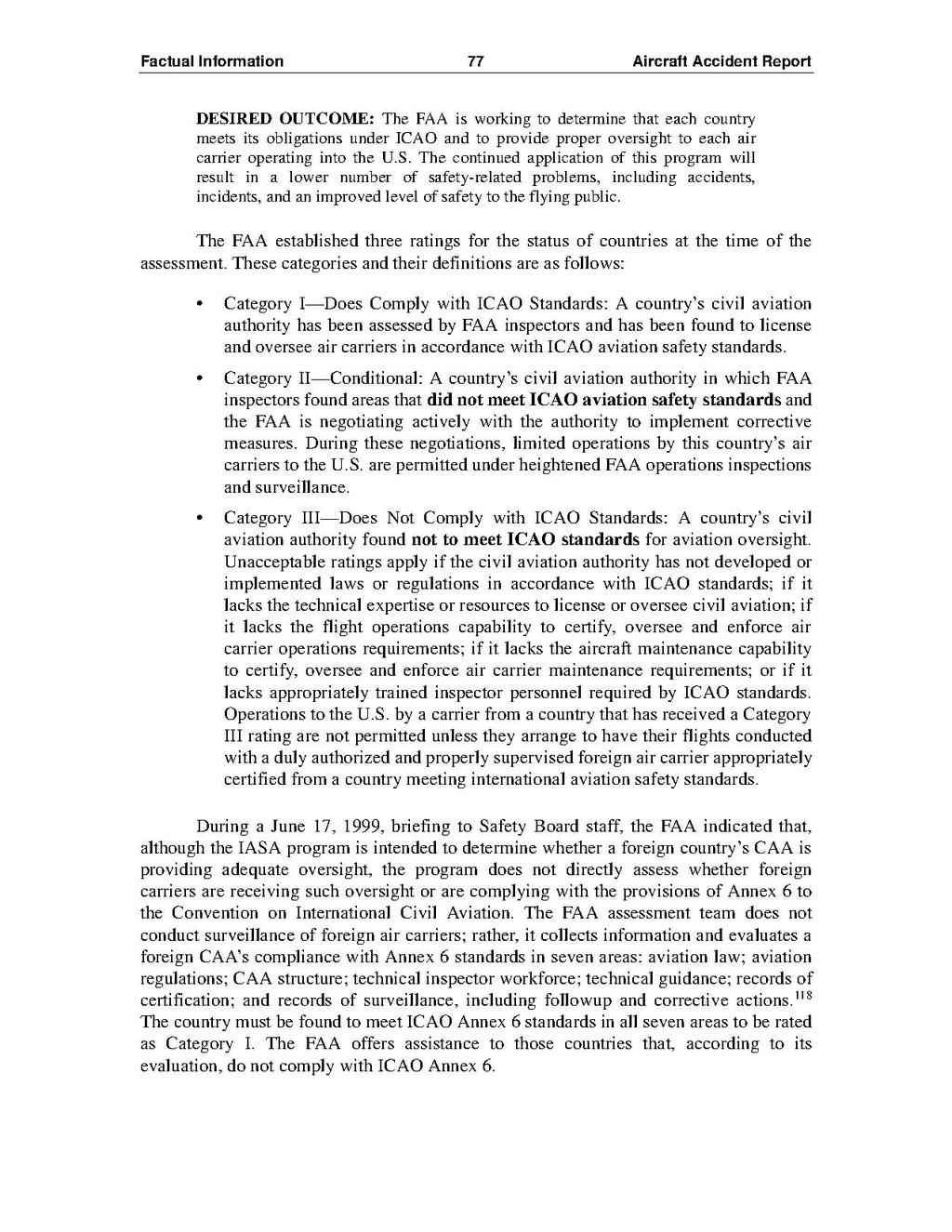DESIRED OUTCOME: The FAA is working to determine that each country meets its obligations under ICAO and to provide proper oversight to each air carrier operating into the U.S. The continued application of this program will result in a lower number of safety-related problems, including accidents, incidents, and an improved level of safety to the flying public.
The FAA established three ratings for the status of countries at the time of the assessment. These categories and their definitions are as follows: ?
- Category I Does Comply with ICAO Standards: A country's civil aviation authority has been assessed by FAA inspectors and has been found to license and oversee air carriers in accordance with ICAO aviation safety standards.
- Category IIConditional: A country's civil aviation authority in which FAA inspectors found areas that did not meet ICAO aviation safety standards and the FAA is negotiating actively with the authority to implement corrective measures. During these negotiations, limited operations by this country's air carriers to the U.S. are permitted under heightened FAA operations inspections and surveillance.
Category III Does Not Comply with ICAO Standards: A country's civil aviation authority found not to meet ICAO standards for aviation oversight. Unacceptable ratings apply if the civil aviation authority has not developed or implemented laws or regulations in accordance with ICAO standards; if it lacks the technical expertise or resources to license or oversee civil aviation; if it lacks the flight operations capability to certify, oversee and enforce air carrier operations requirements; if it lacks the aircraft maintenance capability to certify, oversee and enforce air carrier maintenance requirements; or if it lacks appropriately trained inspector personnel required by ICAO standards. Operations to the U.S. by a carrier from a country that has received a Category III rating are not permitted unless they arrange to have their flights conducted with a duly authorized and properly supervised foreign air carrier appropriately certified from a country meeting international aviation safety standards.
During a June 17, 1999, briefing to Safety Board staff, the FAA indicated that, although the IASA program is intended to determine whether a foreign country's CAA is providing adequate oversight, the program does not directly assess whether foreign carriers are receiving such oversight or are complying with the provisions of Annex 6 to the Convention on International Civil Aviation. The FAA assessment team does not conduct surveillance of foreign air carriers; rather, it collects information and evaluates a foreign CAA's compliance with Annex 6 standards in seven areas: aviation law; aviation regulations; CAA structure; technical inspector workforce; technical guidance; records of certification; and records of surveillance, including followup and corrective actions.[1] The country must be found to meet ICAO Annex 6 standards in all seven areas to be rated as Category I. The FAA offers assistance to those countries that, according to its evaluation, do not comply with ICAO Annex 6.
- ↑ The FAA does not assess a country's compliance with Annex 13. The Safety Board notes that, during the Accident Investigation Group (AIG) divisional meeting held by ICAO from September 14 to 24, 1999, AIG delegates adopted a recommendation for the ICAO Council to take steps to expand the ICAO safety oversight audit program to include an assessment of a country's compliance with Annex 13. The program currently assesses a country's compliance with Annexes 1, 6, and 8.
